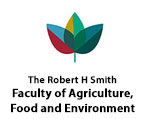Abstract:
Most apple cultivars are self-sterile and completely dependent on cross-pollination from a different cultivar in order to set fruit. Various insects may be pollinators, but the main one is the honey bee [HB] (Apis mellifera). However, despite the advantages of the honey bee as pollinator of many plants, it is a relatively inefficient pollinator of apple flowers. The main reason for this is the tendency of HBs to visit the apple flower from the side (sideworker), thus “stealing” nectar without touching the flower’s reproductive organs – stamens and stigma. In contrast, a bee that visits the flower from the top (topworker) contacts the flower’s reproductive organs, which results in better pollination. Due to the low pollination efficiency, few seeds are formed, and often the resulting fruit is too small to be of commercial value. Experiments conducted in Israel over the last few years have shown for the first time that adding bumblebees [BB] (Bombus terrestris) into pear orchards improved cross-pollination, thus increasing the number of seeds and subsequently fruit size. The goal of the present work was to test the hypothesis that adding BBs to apple orchards may improve cross-pollination. We found that adding BBs to the HBs in the apple orchard improved pollination in all tested cultivars, especially in ‘Gala’, which naturally suffers from relatively few seeds in the fruit. It appears that the addition of BBs did not only increase the number of pollinating insects in the orchard that could perform cross-pollination, including in the cool mornings and in adverse weather conditions, but that it also changed HB foraging behavior, which resulted in improved cross-pollination and increased efficiency, and subsequently more seeds and larger fruit. The improved pollination was due to the greater mobility of HBs between rows of pollinated cultivar and pollenizer, and to the greater proportion of topworkers, which are more efficient pollinators.
Publisher's Version

